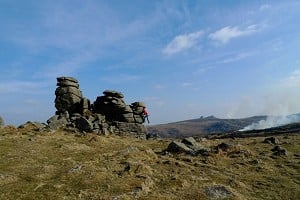
Paul Sagar presents urban Scandinavian sport climbing - and some bonus DWS and trad - in Sweden's capital, Stockholm.
When it comes to European sport climbing getaways, there are places that immediately spring to mind: Kalymnos, El Chorro, Mallorca, Siurana, Sicily. What they all have in common is their hot Mediterranean location, with reliable weather and more limestone than you can shake a clip stick at.
A place that probably doesn't even register when considering a sport climbing holiday is Stockholm. Who goes north to clip bolts?
Well, it may be time for a rethink. Because this part of Sweden is perhaps Europe's best-kept sport climbing secret. This is especially true if you are happy to swap out the usual calcium carbonate for some of the best-quality granite and gneiss you could hope to lay calloused hands on.
The archipelago around Stockholm has been extensively developed since the 1980s, with new lines and even entire crags being bolted as recently as this year. As well as the sport climbing, there is also a wealth of trad and bouldering, and even some excellent DWS if you're prepared to seek it out. The two dominant styles are short, powerful, and intense overhanging crags, or smooth technical granite slabs (often idyllically located by the sea). Routes tend not to be long, but they pack a lot in and there are plenty of them to choose from.
Below is a small selection of the many, many sport crags (with a couple of DWS bonuses) that you might consider visiting. If these whet your appetite, then remember that Stockholm is only a two-hour flight from the UK (with alternative rail and ferry options for a more adventurous but climate-conscious journey).
But be warned, another difference between Sweden and the usual Mediterranean hotspots is that you won't get any 'holiday grades' here! The grading is robust (though usually fair), and while the bolting is generally excellent, this is not a place to come if you want a cheap ego boost. By contrast, if you're interested in satisfying, demanding, high quality climbing, Stockholm could be just the ticket.
Kanalklippan
The ultimate in urban cragging, Kanalklippan is a man-made face of blasted granite, located inside the city of Stockholm itself. Formed during the construction of the canal network, you belay from a narrow towpath ledge right beside the water. This means you also become a tourist attraction, as the various taxi boats travelling up and down the canal carry visitors who will crane their necks in awe as you perform rock acrobatics up to 30 metres. Or in my case, get desperately pumped and flustered on the classic On Stage (6a, name very appropriate!), while struggling to work out the rather unique style of the place.
Although the cliff doesn't look all that appealing at first sight, the climbing is of surprisingly high quality. It's a little reminiscent of quarried limestone in the UK – except, y'know, better. Square cut edges and unusual body positions, with a surprising number of sloping holds, make for a unique experience, especially combined with the location.
Other excellent routes include the outstanding dihedral system of Kanalen (6a) (if you're feeling strong, try the vicious 6c mantel extension) and the wonderfully trad-feeling Håll käften båtnisse (6b+) and Vi slänger dynamite på motorbåtarna (6b). The latter of these translates as 'we throw dynamite onto the motorboats', which is especially appropriate as half way up you use a borehole into which dynamite was once dropped to create the cliff itself.
Given Kanalklippan's inner city location, it could be a great option if you're looking to combine some relaxed climbing with a weekend city break. Easily reached by public transport, the crag has been expanded and re-equipped in 2022, offering super-safe climbing, where at least 15 quickdraws will be required if planning to clip all bolts on the longer excursions.
Skevik
An absolute gem of a crag, and one I am desperate to get back to as soon as I can. The routes here are longer than at most Stockholm venues, going up to 30 meters. The climbing is on the finest quality granite, much of it overhanging, with sustained, continuously interesting and strongly defined lines, with generally excellent bolting.

Skevik hosts a raft of classic routes, especially in the 6c+ to 7b range. Must-do climbs include Icones (6c+), the aptly named Pumpmaskin (7a+), and Tabu (7b). There is also the sublime Luftslottet Direkt (6c+), which on my first visit in 2019 I loudly declared to be 'the best 6c+ in the world', much to the amusement of some local Swedes.
For wads, there are also hard options like Ingen Vinner (7c) and Vilddjuret (8a).
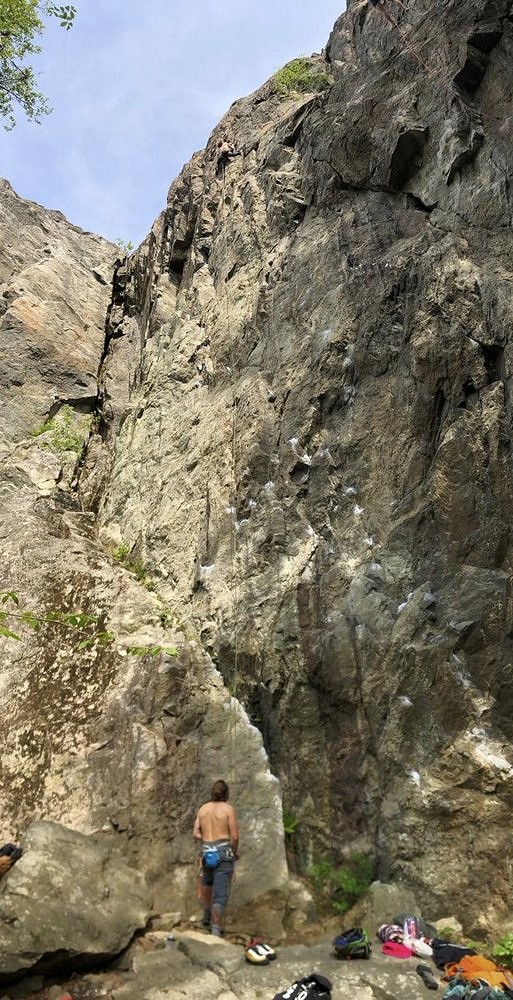
The one downside of Skevik is that in the summer the mosquitos can be a nuisance. If you go, take insect repellent to avoid being forced into an early exit.
Nacka Kvarn
Basically a shorter, steeper, more intense version of Skevik, and likewise host to some local classics. Things properly kick off above 6b+ here, and the grading is stiff (rumours are that the next edition of the guidebook will feature a few upgrades).
The fun starts with belter that is Brown Sugar (6b+). If you pump out first go, then who cares, because you now have the excuse of climbing it again for the redpoint (like I had to).
Once you've done that, move left and get spanked on the excellent but highly demanding Hundra ār av ensamhet (6c+, but rumoured to be going up soon!) and Totalvägra (7a). If those don't wear you out, try Freaky Deaky (7a+) or Freaky Deaky Direct (7b). There's loads more in this grade range to go at here, and a few harder things too.
Nyckelviken
Extensively developed in 2022, this idyllic crag offers a total contrast to the above venues, featuring technical granite slabs climbed above a beautiful bay with views over central Stockholm.
Local developer Buster Delin has put a huge amount of effort into creating an easy-angled, easy-grade paradise. While many routes are short, those such as Släng över bord (6b+) and its neighbours Ra (5b) and Saltsjön (5b) extend for 35-40 metres, above a sea-level via ferrata that runs along the base of the pristine main slab dominating the bay. (If climbing from the via ferrata, it's best to do it trad-style and have the second top out, or else when you pull the rope it will definitely go in the sea!)
A little further along, the sector Sjöklippan offers a range of climbs from 5a to 8b, likewise on ultra-smooth, technically demanding granite slabs. Good footwork is non-negotiable! There is also a small but pristine collection of DWS climbs, including the superb Scylla (6c, S0) and Charybdis (6c+, S0) – though it is best to save these until high summer, when the Baltic is not, well, baltic.
On a sunny evening, this is just a magical place to climb, watching the sun set over Stockholm as boats roll past and swans paddle about beneath you. At the time of writing, a fully laminated topo for the main sections is available in the hollow tree on the obvious descent path.
Finnsvedsbergen
An iconic crag of the Stockholm area – see the action shot of local 9a crusher Matilda Söderlund dispatching Tintin (7c+) on the front of the current guidebook – this is a must-visit venue. Approached through a magical woodland trail to arrive once more by the sea, the main sector of Sjöväggen hosts the classic pump-fest of Kapten Haddock (7a), which is also pleasingly photogenic.
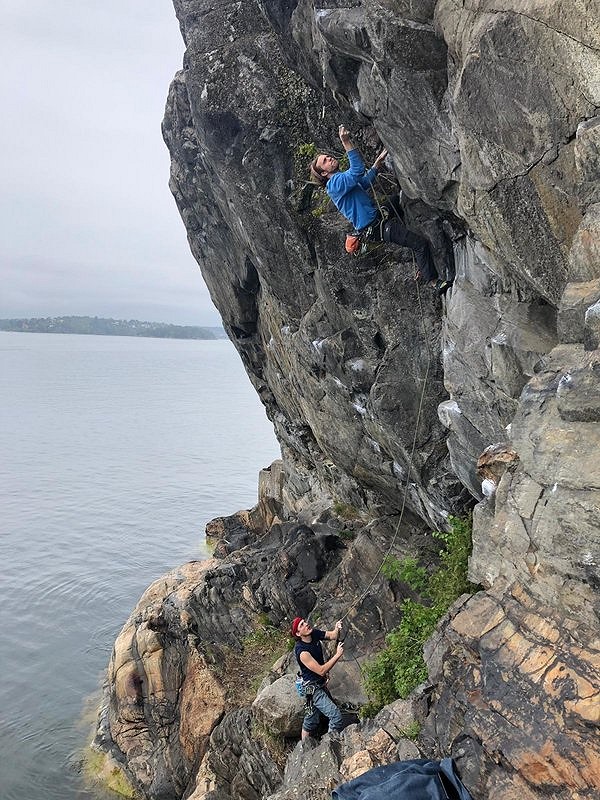
The harder, quality routes here are very overhanging and powerful, on smooth rounded holds, with what might generously be called jugs sometimes located at strategic points. The excellent Sjöjunfrun (6b+) offers a bracing experience, and for the very brave it can be climbed as a DWS at about S2 (don't fall off the crux!), though this will then require jumping in from 15 metres at the top.
Further along is sector Högklint. The routes here are short, but very good. And again, the grading is robust. Try the fantastic Gör mig till kung (6a) and Ormbunken (6b+). Indeed, this crag is a marvellous geological mélange: some of it is compact bullet-hard granite, some of it smooth gneiss. Take your pick!

Between Högklint and Sjöväggen there is an old trad sector called Svaväggen. And beneath this lies a slab above deep water. Visiting during a heatwave, my buddy (and now Stockholm local) Shaun Hurrell and I were able to grab five new DWS first ascents here – which goes to show how much rock is still left to be explored and developed in the area.

Ekoberget
Another fantastic crag down by the waterline, Ekoberget features strange, smooth, granite that is often a real puzzle to work out. The slabs here are technical and demanding, but there are also lovely crack systems, face climbs, and even some pumpier lines to get your teeth into. Warm up on Fotografen har en stor apparat (6a), puzzle your way up Ronin (6b+), get your forearms burning on Uppkomsten (6c), and then cap it off with the classic Anomalocaris (7a). For those who want harder things still, there are routes at the 7b, 7b+ and 7c+ grades too, and plenty else besides.
Logistics
When to go
Sweden, as you might have heard, is in Scandinavia. Stockholm is roughly as far north as the Shetland Islands. That means spring comes late, and the winters are cold. Realistically, you probably want to visit between May and September. Rain is, inevitably in this part of the world, a real possibility. But when the weather is nice, it's really nice. An added bonus is that even in the height of summer it is unlikely to get too hot to climb (even if you need to seek out the shade). Climbing in the winter months is off the cards, unless you are a complete masochist who enjoys freezing your limbs off in the dark. If it does rain, Stockholm boasts many excellent indoor walls that you could spend a day or two enjoying.
Travel
Many airlines fly cheap flights to the various Stockholm airports (though be warned that some of these are an hour-or-more bus ride from the city itself!), and ferry and rail alternatives are possible. The Swedish public transport system is very good, but if you're planning to go further afield than Kanalklippan, life is going to be much easier if you hire a car. Most crags are close to the road/parking. Accommodation is plentiful and runs the full range that you'd expect to find in a major European city.
Gear
A 70m rope will see you right at most crags, and 15 quickdraws is normally more than enough. If planning to do some DWS, spare/old climbing shoes and a spare chalk bag are obviously useful.
Guidebook
The local guidebook is Klättring i Stockholm, and currently covers more than 3,000 routes across 200 crags. The last edition came out in 2018 but a new version is already in the works, partly due to the need to keep up with the rapid route development in the area. The guidebook is in Swedish, but very easy to use, with well-drawn topos and a helpful 'Selected Crags' overview in English. Pretty much everyone in Sweden speaks some level of English, so you can often get by just by asking people for help.
What else is there to do?
Stockholm is a major historical European capital, so there are of course a wealth of cultural attractions to explore. Museums, art galleries, old churches – I dunno, the sort of stuff I never do because I only ever go climbing. In terms of other outdoor activities, wild swimming is available pretty much on demand, the fishing is outstanding (big, big pike, and loads of migratory trout) while the mountain biking is apparently top notch too. Basically, it seems like the best place in the world during the summer, and if it weren't for the long, cold, frigid winters, I'd consider moving there myself.
But watch out for the ticks...
The only sight bummer about climbing in Sweden is that it is similar to the Scottish Highlands in terms of the risk of picking up ticks in the summer months. Long trousers are advisable, as is the use of repellents. Doing a tick check at the end of each day is strongly advised, and you should carry a tick remover in case you need to dig one out. Lyme disease is no joke. If you think you've been bitten by an infected tick, make sure you seek medical assistance ASAP.
- REVIEW: Peak Limestone Rockfax 30 Jun, 2020
- ARTICLE: Decking Out: Battling Complacency and Taboo in Climbing Culture 22 Jan, 2020
- ARTICLE: Guidebooks: What They Say vs. What They Mean 10 Oct, 2019
- ARTICLE: Online Budget Gear - The Perils of the Bargain Buy 18 Jun, 2019
- DESTINATION GUIDE: Carinthia - Austria 11 Aug, 2018
- SKILLS: From Punter to Crusher: How to Climb Sport 7a 21 Jun, 2018
- ARTICLE: Cryptic Crags 18 Apr, 2018
- DESTINATION GUIDE: Tensleep Canyon: A Wilderness Paradise 15 Sep, 2017










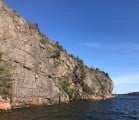






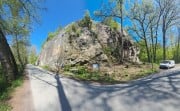
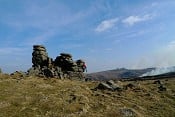

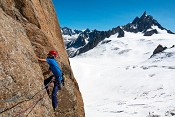
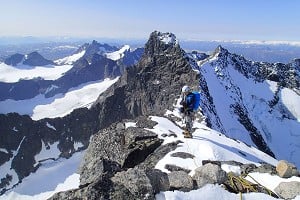
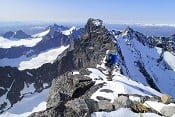



Comments
I've climbed in some odd places over the years but Stockholm does quite well in that respect. Haggsta is one of the oldest developed crags in the area I was told, and the climbing good and normal. But you park in he car park for a crematorium and massive cemetery and walk through it to get to the crag. A bit odd.
But Munchenbryggeriet was my fave - it is literally in a down town carpark. With a head torch to help the street and car park lights, we climbed there on a November night. http://lightfromthenorth.blogspot.com/2010/11/urban-climbing-stockholm.html
And pictures of it in better weather and light: https://27crags.com/crags/munchenbryggeriet/photos
Helsinki is quite similar in many ways, although the most urban climbing there tends to be bouldering. There is sport and trad in the city limits though. Never got a tick in Helsinki, although they do have them in Finland - particularly in the islands going out in the Baltic towards Sweden, so that makes sense.
If you're actually looking at visiting Stockholm for sport climbing, here are a few things to consider.
The crags are spread out over a large area. Hiring a car is the best option. Not cheap. You can go by public transport but this may take a large chunk out of you're day.
Where to stay. Unfortunately there are no climbing cabins or camp grounds for climbers to meet after the day's activities. Everyone is local, so we all go home.
If you're looking for Trad climbing don't even consider Stockholm. Go west to Bohuslän.
I really don't want to seem negative, I'm just being realistic.
So save you're hard earned money and climb somewhere else.